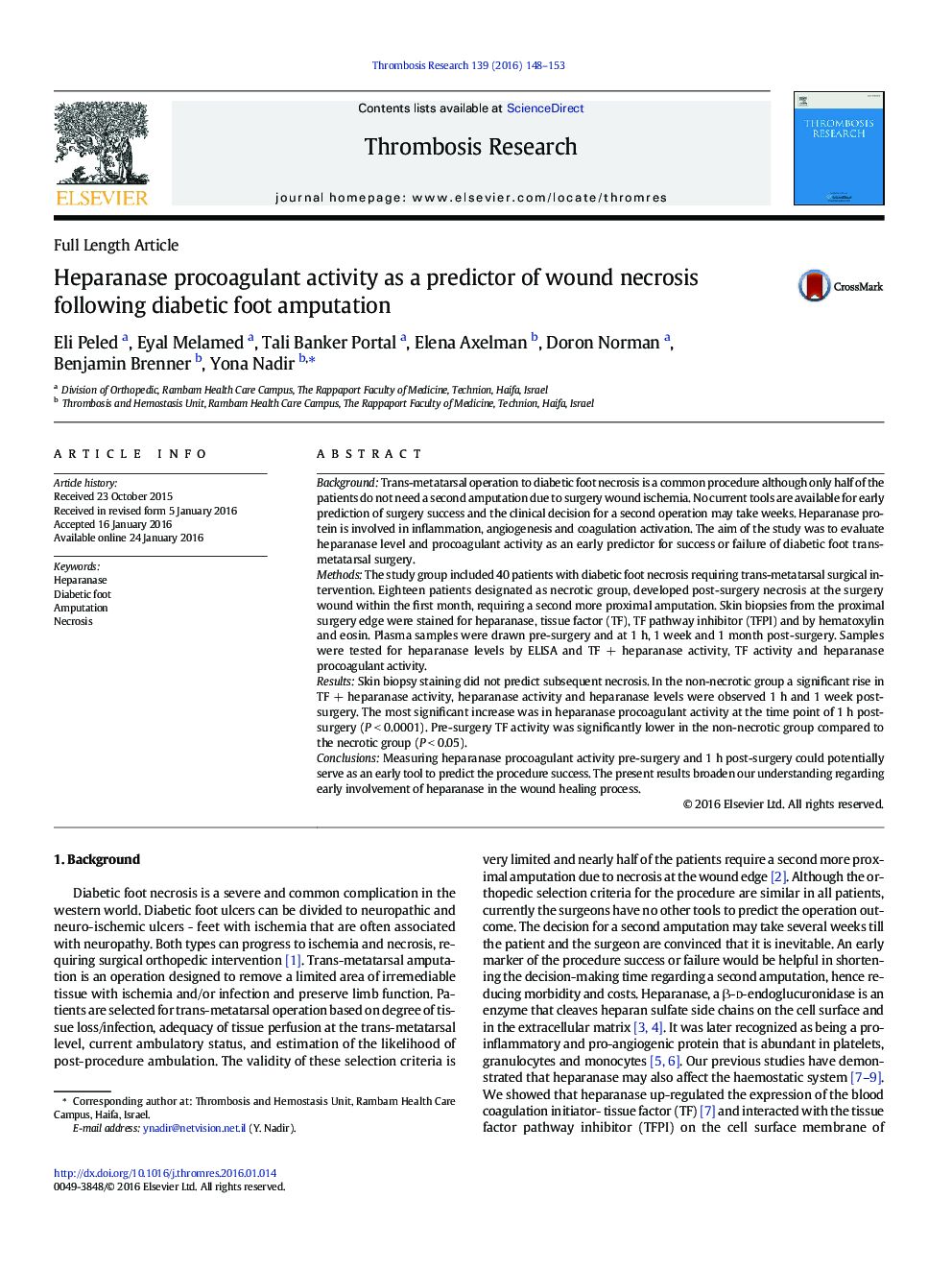| کد مقاله | کد نشریه | سال انتشار | مقاله انگلیسی | نسخه تمام متن |
|---|---|---|---|---|
| 3027047 | 1579204 | 2016 | 6 صفحه PDF | دانلود رایگان |
• Heparanase procoagulant activity pre-surgery and 1 hour post-surgery could serve as an early tool to predict necrosis.
• This is the first study suggesting a marker to imply the need of a second amputation in patients with diabetic foot.
• The present study broaden our understanding regarding early involvement of heparanase in the wound healing process.
BackgroundTrans-metatarsal operation to diabetic foot necrosis is a common procedure although only half of the patients do not need a second amputation due to surgery wound ischemia. No current tools are available for early prediction of surgery success and the clinical decision for a second operation may take weeks. Heparanase protein is involved in inflammation, angiogenesis and coagulation activation. The aim of the study was to evaluate heparanase level and procoagulant activity as an early predictor for success or failure of diabetic foot trans-metatarsal surgery.MethodsThe study group included 40 patients with diabetic foot necrosis requiring trans-metatarsal surgical intervention. Eighteen patients designated as necrotic group, developed post-surgery necrosis at the surgery wound within the first month, requiring a second more proximal amputation. Skin biopsies from the proximal surgery edge were stained for heparanase, tissue factor (TF), TF pathway inhibitor (TFPI) and by hematoxylin and eosin. Plasma samples were drawn pre-surgery and at 1 h, 1 week and 1 month post-surgery. Samples were tested for heparanase levels by ELISA and TF + heparanase activity, TF activity and heparanase procoagulant activity.ResultsSkin biopsy staining did not predict subsequent necrosis. In the non-necrotic group a significant rise in TF + heparanase activity, heparanase activity and heparanase levels were observed 1 h and 1 week post-surgery. The most significant increase was in heparanase procoagulant activity at the time point of 1 h post-surgery (P < 0.0001). Pre-surgery TF activity was significantly lower in the non-necrotic group compared to the necrotic group (P < 0.05).ConclusionsMeasuring heparanase procoagulant activity pre-surgery and 1 h post-surgery could potentially serve as an early tool to predict the procedure success. The present results broaden our understanding regarding early involvement of heparanase in the wound healing process.
Journal: Thrombosis Research - Volume 139, March 2016, Pages 148–153
